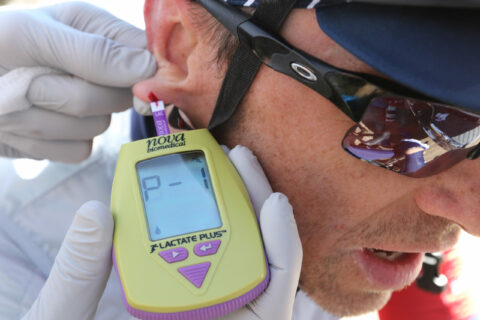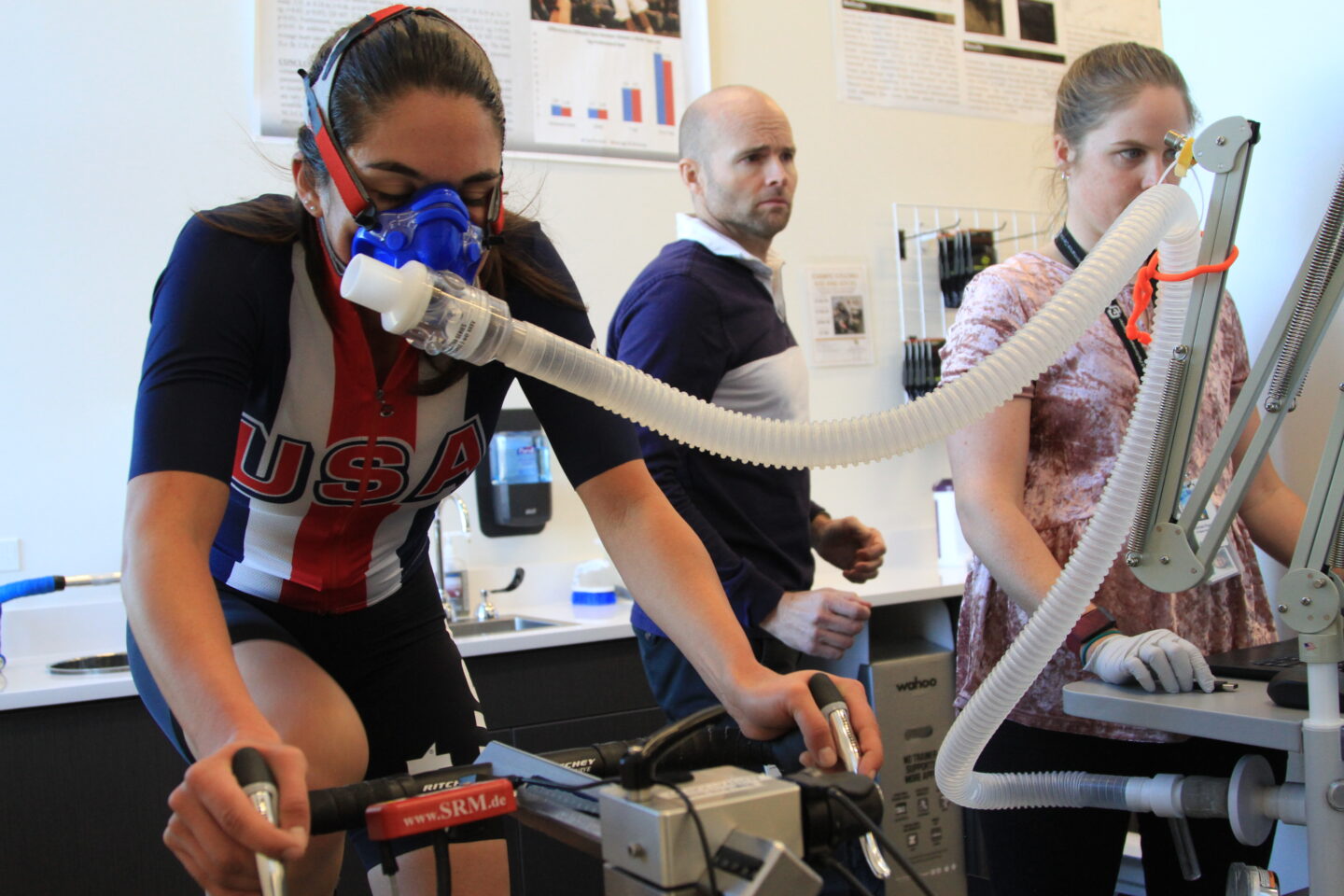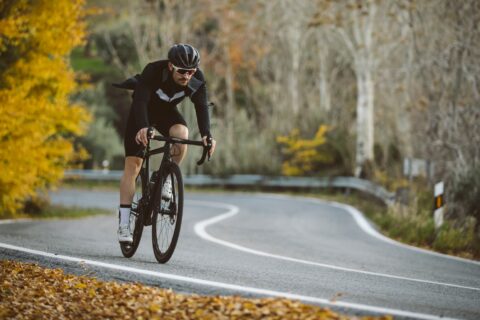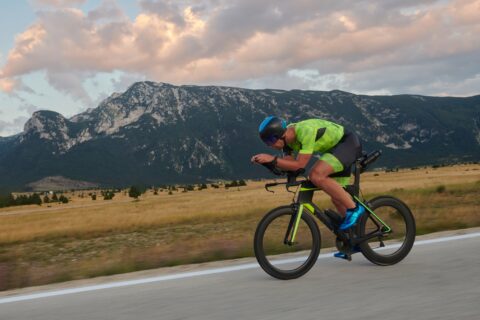There are several acronyms and abbreviations that have become part of the lexicon of endurance training—with VO2max among the most commonly used. (It may also be one of the most misused terms.) More recently, you may have heard of VLamax, which is in some ways its counterpart.
Let’s start by carefully defining these abbreviations.
VO2max is simply the maximum rate of oxygen consumption measured during exercise. VO2max is used to mean a lot of different things. For example, athletes refer to “VO2max intervals” and believe they are great at improving VO2max. But that’s not necessarily the case. They’re called that because they’re done at VO2max power. The fact is, for a lot of athletes, doing that type of interval work trains their anaerobic system a lot more than their aerobic system.
In episode 75 of Fast Talk with Dr. Stephen Seiler, we discussed this subject at length. Dr. Seiler published a classic study in which athletes performed 4×4, 4×8, and 4×16-minute intervals. He found that the 4x4s were performed right around VO2max power, while the 4x16s were done closer to just below threshold power.
Dr. Seiler drew two conclusions in his study. First, he suggests that the belief that training at specific intensities trains specific energy systems doesn’t pan out. Second, he found that when the athletes did the 4×4 intervals, their blood lactate concentrations would rise to around 13 mmol/L (a high figure) and those athletes saw more improvement in anaerobic power (i.e. 30-second power) than aerobic power (i.e. power at 4mM).
Dr. Seiler’s research is validated by other research which shows that adaptations from most training ultimately channels through the PGC-1alpha pathway. That means that many adaptations are going to be similar and somewhat complementary. Yes, there is a distinction between anaerobically focused work and aerobically focused work, but it’s blurry. Doing a workout at 86 percent of max heart rate versus 90 percent of max is getting into the weeds—physiology is not so well delineated.
In fact, a primary conclusion of a previous study by Dr. Seiler, using the same three types of intervals, was that backing down 4-5 percent of max heart rate and accumulating more time at a slightly lower intensity had much greater gains.
There is a vast amount of research on VO2max. On the other hand, VLamax is a more recent addition to physiology jargon. It is defined as the maximum production rate of lactate in your muscles (V = flux, La = lactate, max = maximum). Because the amount of energy produced during glycolysis is proportional to the amount of lactate produced, VLamax serves as a measure of glycolytic power.
VLamax is used by INSCYD to help explain an athlete’s physiological attributes, among other things.
Now, let’s dive deeper into the relationship between VO2max and VLamax.
Beyond the basics of VO2max and VLamax
Coach Trevor Connor helps us better understand the relationship between VO2max and VLamax. First, your fitness cannot be defined by any single number. Second, VO2max often gets used incorrectly. Finally, our energy systems are not as distinct as you might think.
Your “engine” is more than a single number
Even though athletes often refer to VO2max work, they can’t train VO2max all that much, according to Connor.
“Yes, when you’re unfit, you can improve this fitness attribute,” he says. “But you quickly hit peak potential or come close to it. Most aerobic work that cyclists do helps drive threshold power closer to VO2max.”
A novice cyclist may have a threshold at 80 percent of his or her VO2max power. A world-class time trialist can be closer to 95 percent.
Remember, too, that we’re talking about improving the power of the aerobic engine. And as that engine improves, athletes see an increase in anaerobic threshold, aerobic threshold, reliance on fat, and so forth. The engine is more than just a single number.
VO2max power is not necessarily five-minute power
Often when athletes discuss their VO2max power, they are actually talking about their five-minute power. They’re not necessarily the same.
“For some athletes with good aerobic engines, it’s equivalent,” Connor says. “But I’ve seen a lot of athletes with big anaerobic engines (i.e. a high VLamax) who can put out a huge five-minute power despite the fact that not a lot of it is coming from the aerobic engine. In that case, it’s not the same as VO2max.”
So, to improve five-minute power, you must do a lot of above-threshold glycolytic work. But that’s different from training your VO2max or your aerobic engine.
The body’s energy systems are not that specific
This is something we’ve emphasized in several episodes of Fast Talk. There is a belief that if you go a percent or two below threshold, suddenly you’re training a different system and now you’re doing “sweet spot” work rather than “threshold” work. Again, human physiology is not that specific.
“There’s a big overlap between threshold work and sweet spot work,” Connor says.
A simple explanation why you can’t fully train both: A lot of our training ultimately hits our fast-twitch IIa fibers. They are the fibers that can behave a lot like slow-twitch fibers or alternately like your explosive IIx fibers. The nature of your training determines which direction they go in. That’s why you can’t perpetually improve both your aerobic engine and VLamax.
If you focus on aerobic work, the IIa fibers will start imitating slow-twitch fibers and your VLamax will necessarily drop.
“There is a rule in sports physiology that all training causes a conversion towards slow-twitch,” Connor says. “So, to improve VLamax, you literally need to stop training—or dramatically reduce training. That will improve VLamax, but the conversion of your IIa fibers back towards true fast-twitch will hurt your aerobic engine.”
We always use all energy systems—even when sprinting, both the aerobic and anaerobic energy systems are working. The same is true for all but the slowest riders.
“Yes, a time trialist is going to benefit from Tabata-style high intensity work,” Connor says. “Even though they will do a long time trial at their threshold, they will still use a lot of anaerobic energy, and so a stronger anaerobic system will help them.”
There’s a lot more to know about VO2max and VLamax. Listen to the following episode of Fast Talk to learn more about the relationship between these two concepts.





